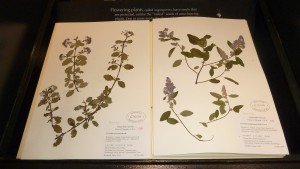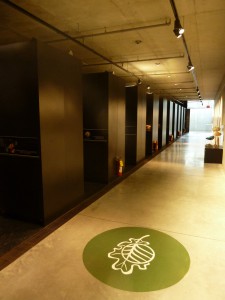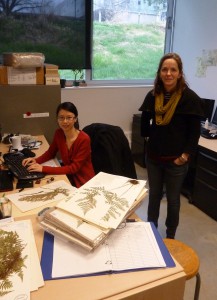In a recent lab meeting, the issue of herbarium vouchering came up, and a spirited discussion ensued. Inspired by what I heard there, and by some discussions with the manager of the UBC Herbarium, I decided to create a post on the how and why of herbarium vouchering. I put the complete version of this on my own research blog, accessible here. Here, I mostly wanted to summarize the idea, and try to convince everyone in the lab that vouchering is really important.
To summarize, the value of herbarium vouchers is massive. Herbarium vouchers are a physical record of the organisms that scientists study. By placing a specimen in a museum, a scientist is recording, forever, the exact organism that his or her research was based on. These specimens are the bastions of biological knowledge, and the only way of permanently connecting research with the actual organisms that research is concerned with. Photos are good, too, but they are not a replacement for voucher specimens.
I know that I’m probably preaching to the choir here, but I just wanted to make sure everyone has the same information on why these specimens are valuable. On my blog I go into some detail on how these specimens might become valuable, even in the context of research that seems to have nothing to do with herbaria. In the context of sunflower genomics and molecular ecology, for instance, I think that it’s still very important to have vouchers. For example, if you are studying flowering time differences between two different species, and you collect data on a bunch of populations, you would want to prepare a voucher specimen to represent each population. The same is true for any population that you collect seeds from for future research. When you go to publish on the results that you obtained from the seeds, you can refer to the original vouchers, and not worry about making a voucher from the actual greenhouse plants. It’s not important that the plants you studied in the greenhouse are not the same individuals that you sampled in the field. Think of this as biological citation. You are citing a voucher specimen, the same way you would cite an old paper for a method that no one thinks about any more.
For the genome sequencing work, I would say that the vouchers are also valuable. I don’t think it would be necessary to make vouchers of plants that are grown in a greenhouse, even if they come from seeds collected in the wild. However, it would be very helpful to future generations of scientists if you were able to trace out, in your paper, how the plants that you studied and sequenced are connected to wild populations. To do this in a “repeatable” way, you must include vouchers from wild-collected plants. In the absence of wild-collected plants, a greenhouse plant would also do, as long as you explain this on the label, so that people are aware of the situation.
In effect, the voucher specimen is your permanent statement about what plant you were studying. That way, if you and everyone who you worked with dies, and the populations that you studied go extinct, future researchers will still be able to figure out what plant you collected all that data on. Simply stating the name of the species in your papers is not enough. I’m do taxonomy, and I can tell you that the names change like seasonal fashions, and are not at all permanent. The specimens, on the other hand, are forever.
Just one last statement from the soapbox. When I was at Duke University I made this same speech to a graduate student colleague who was working on a massive project on the genetics of a certain yellow-flowered herb that shall remain nameless, and he told me “I agree with you, but science does not reward me for it.” Now, he’s completely right. You are not going to make tenure on the basis of how many vouchers specimens you deposit in herbaria (100 years ago, this was the case. But not today!). This is not about rewards, though. It’s about doing science right. Personally, if I were interested only in rewards, I’d go into banking or something. Making vouchers is the right thing to do. History will vindicate you, in the absence of earthly rewards.
Using the UBC Herbarium
At UBC, we’re fortunate to have one of the most modern herbaria in the world, the UBC Herbarium, which is located on the lowest level of the Biodiversity Centre. The herbarium is part of the museum, where members of the public are able to check out the collections:
If you have a chance, I would highly recommend paying a visit. It’s really beautiful. The herbarium is managed by Linda Jennings (she’s the one of the right; lindaj@mail.ubc.ca):
If you want to get into the business of making voucher specimens for the plant populations that you study, check out my blog post for the blow-by-blow. The people in the herbarium can provide you with presses and all the other ingredients that you will need. All you need to do is hand over the pressed specimens, along with the data they need to prepare a label. In fact, they have a template, which you simply fill in. It’s here: UBC_Template.
Good luck! Let me know if you have any questions, or want a personal tutorial. I’m happy to take people by the herbarium to show them how it’s all done.



